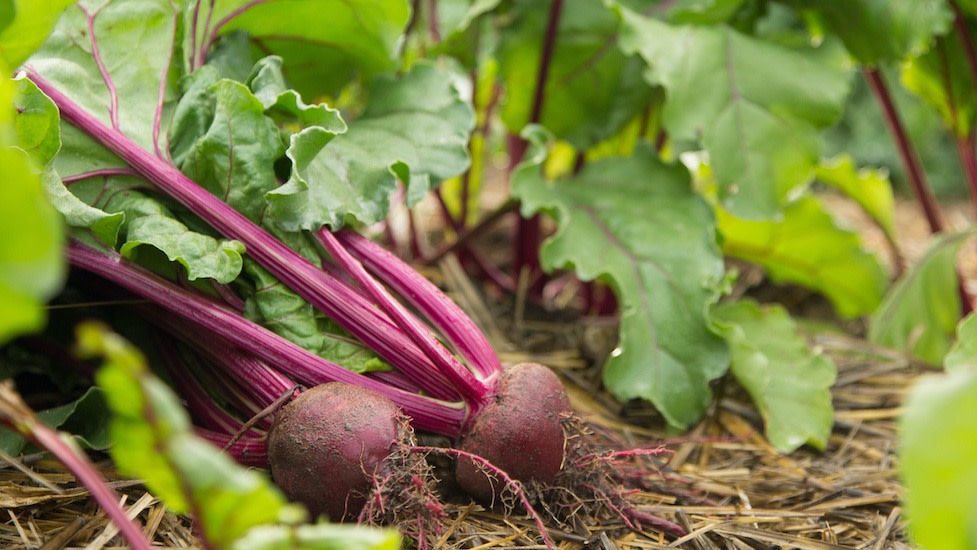Beets Companion Planting Guide: 6 Plants to Grow With Beets
Written by MasterClass
Last updated: Jun 7, 2021 • 3 min read
Beets are fast-growing, cool-season crops that are simple to harvest. Part of the Chenopodiaceae family (along with Swiss chard), both beetroots and beet leaves are edible. With plenty of beet varieties, beets make great companion plants for your vegetable garden, and are one of the easiest crops to grow. Early spring is the best time to plant beets.
Learn From the Best
What Is Companion Planting?
Companion planting is a time-tested gardening method that enriches and protects vulnerable crops. Farmers and gardeners plant specific crops near each other in order to deter pests, attract beneficial insects, and stimulate growth.
What Are the Benefits of Companion Planting?
Companion plants will either help a specific crop grow or will grow better beside a specific crop, and can do many support jobs in the garden:
- Repel insect pests. Cabbage worms, cucumber beetles, Mexican bean beetles, carrot flies, cabbage moths—all kinds of pests can plague vegetable gardens. Many companion plants (like marigold flowers, catnip, and rue) repel specific pests and should be planted near certain crops to keep them pest-free.
- Attract beneficial insects. Pollinators like bees and ladybugs can use a little encouragement to visit vegetable gardens and pollinate the crops. Gardeners often plant attractive plants like borage flowers to encourage pollinators to visit.
- Improve soil nutrients. When crops grow, they take up valuable nutrients from the soil—leaving the gardener to do a lot of work at the end of the season to renew the soil’s nutrients. However, there are many companion plants (like bush beans and pole beans) that add nutrients like nitrogen back into the soil, helping keep other plants healthy and well-fed.
- Encourage faster growth or better taste. Many companion plants (like marjoram, chamomile, and summer savory) release specific chemicals that encourage faster growth or better taste in the plants around them, leading to quicker and better harvests for home gardeners.
- Provide ground cover. Plants that spread low across the ground (like oregano) serve as a blanket over the soil, protecting it from the sun and keeping it cooler for plants that need it.
- Provide necessary shade. Plants that grow tall and leafy (like zucchini and asparagus) can provide welcome shade for sun-sensitive plants beneath them.
- Serve as markers. When growing slow-growing plants, it can be difficult to tell where the rows will be while you’re waiting for the seeds to sprout. Gardeners often use fast-growing plants (like radishes) interspersed with the slow growers in their rows to delineate where the slow growers will be.
6 Companion Plants to Grow with Beets
Beets have many garden friends, but only a few foes. As a cold-tolerant plant, beets are a perfect beginner crop. Although susceptible to wireworms, root maggots, and cutworms, beets are generally hardy, able to withstand a cooler climate and partial shade, and can still be harvested in the fall. Beets should not be grown near pole beans or field mustard, but a few good companions for beets are:
- 1. Onions. Along with shallots, leeks, and garlic (which can improve beets’ growth and flavor), onions can be a natural deterrent for certain garden pests, repelling insect pests like aphids and sugar beet-flea beetles, as well as mammal pests, like rabbits and deer.
- 2. Beans. While pole beans will stunt your beets’ growth, bush beans, soybeans, and butter beans all flourish best near beets, enriching the soil with nitrogen and nutrients.
- 3. Lettuce. Lettuce has shorter root growth, making it a great companion for beets. With its more shallow roots, this veggie can fill the open spaces in your garden without competing for resources against your root crops.
- 4. Cabbages. Some of the best companion plants for beets are members of the cabbage family. Plant beets near cruciferous vegetables like kohlrabi, kale, cauliflower, broccoli, and Brussels sprouts to help enrich the soil and improve the quality and growth of your Brassicas.
- 5. Radishes. Fast-sprouting radishes can be helpful for your beet plant. Radishes can help loosen the soil, which is beneficial for beets, which can toughen in dense soil.
- 6. Catnip. Catnip is a potent pest repellant to many non-beneficial insects like Colorado potato beetles, Japanese beetles, flea beetles, aphids, and squash bugs. However, catnip is also powerful against voles and mice, who are known to feast on the top of beet greens. Planting beets strategically among catnip (as catnip can grow out of control when their seeds spread).
Learn More
Grow your own food with Ron Finley, the self-described "Gangster Gardener." Get the MasterClass Annual Membership and learn how to cultivate fresh herbs and vegetables, keep your house plants alive, and use compost to make your community - and the world - a better place.
